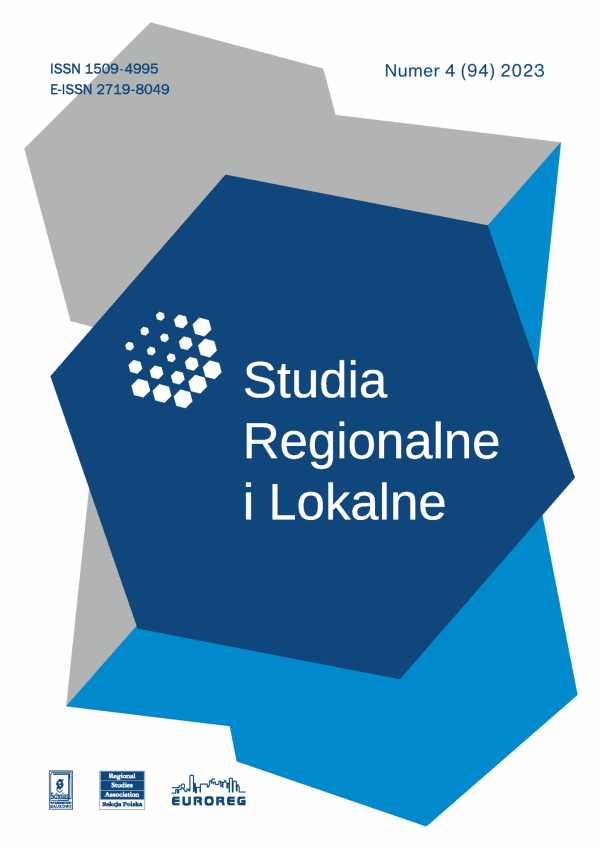Issue:
4(94)/2023
Janina Kotlińska, Anna Mizak, Anna Krawczyk-Sawicka
The Impact of the Socioeconomic Potential of the Regions in Poland on Their Financial Condition as a Typology Criterion
DOI: 10.7366/1509499549404
Typologizacja polskich regionów w oparciu o wpływ potencjału społeczno-gospodarczego na ich kondycję finansową
Celem opracowania jest zbadanie zależności pomiędzy potencjałem społeczno-gospodarczym a kondycją finansową regionów (województw) w Polsce. Autorki stawiają hipotezę, że istnieje liniowa zależność między potencjałem regionów, przejawiającym się zasobnością i aktywnością gospodarczą osób mieszkających i podmiotów funkcjonujących na ich obszarze, a potencjałem dochodowym tych jednostek samorządowych, a przez to możliwością zaspokajania przez nie potrzeb wspólnoty samorządowej. Na potrzeby analizy wybrano 11 miar z czterech obszarów, oddających społeczny i gospodarczy potencjał regionów, i siedem miar kondycji finansowej, odzwierciedlających strukturę ich dochodów i wydatków budżetowych, jak również wybrane ich wartości w ujęciu per capita. W opracowaniu w związku z powyższym zastosowano metody statystyki opisowej, korelację liniową r-Pearsona i metodę sum standaryzowanych (wskaźnik Perkala) do typologizacji badanych podmiotów.
The Impact of the Socioeconomic Potential of the Regions in Poland on Their Financial Condition as a Typology Criterion
The aim of the study is to examine the relationship between the socioeconomic potential and the financial condition of regions (voivodeships) in Poland. The authors hypothesise that there is a linear relationship between the potential of regions, manifested by the wealth and economic activity of people living and entities operating in their area, and the income potential of these local government units, and thus their ability to meet the needs of the local government community. For the purposes of the analysis, eleven measures were selected from four areas, reflecting the social and economic potential of the regions, and seven measures of financial condition, reflecting the structure of their budget income and expenditure, as well as their selected values on a per capita basis. In connection with the above, the study used descriptive statistics methods, linear correlation r-Pearson, and the method of standardised sums (Perkal index) in order to typologise the studied entities.
Affiliation:
Janina Kotlińska: Katolicki Uniwersytet Lubelski Jana Pawła II, Instytut Ekonomii i Finansów, Katedra Finansów i Rachunkowości, Al. Racławickie 14, 20-950 Lublin, Polska; ORCID: 0000-0003-4206-0450;
janina.kotlinska@kul.pl Anna Mizak: Katolicki Uniwersytet Lubelski Jana Pawła II, Instytut Ekonomii i Finansów, Katedra Finansów i Rachunkowości, Al. Racławickie 14, 20-950 Lublin, Polska; ORCID: 0000-0003-1250-0195;
anna.mizak@kul.lublin.pl Anna Krawczyk-Sawicka: Katolicki Uniwersytet Lubelski Jana Pawła II, Instytut Ekonomii i Finansów, Katedra Finansów i Rachunkowości, Al. Racławickie 14, 20-950 Lublin, Polska; ORCID: 0000-0002-1294-4872;
anna.krawczyk-sawicka@kul.pl 


